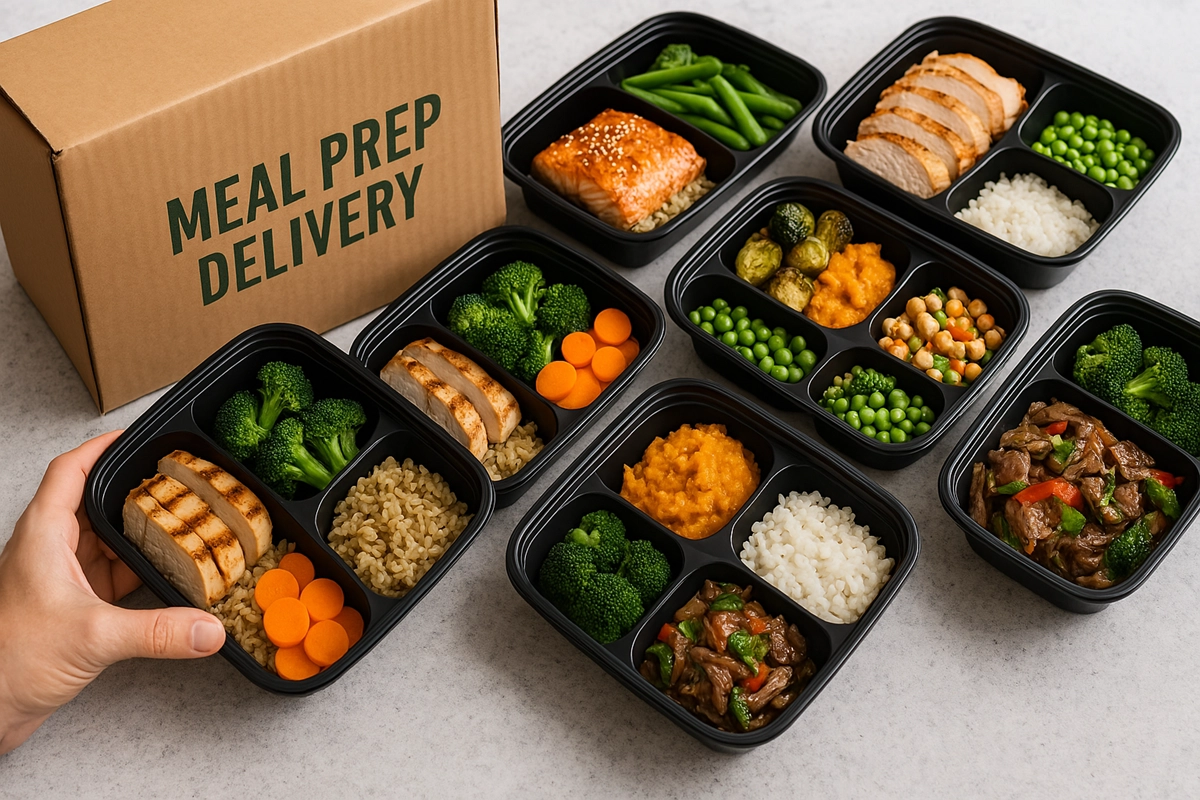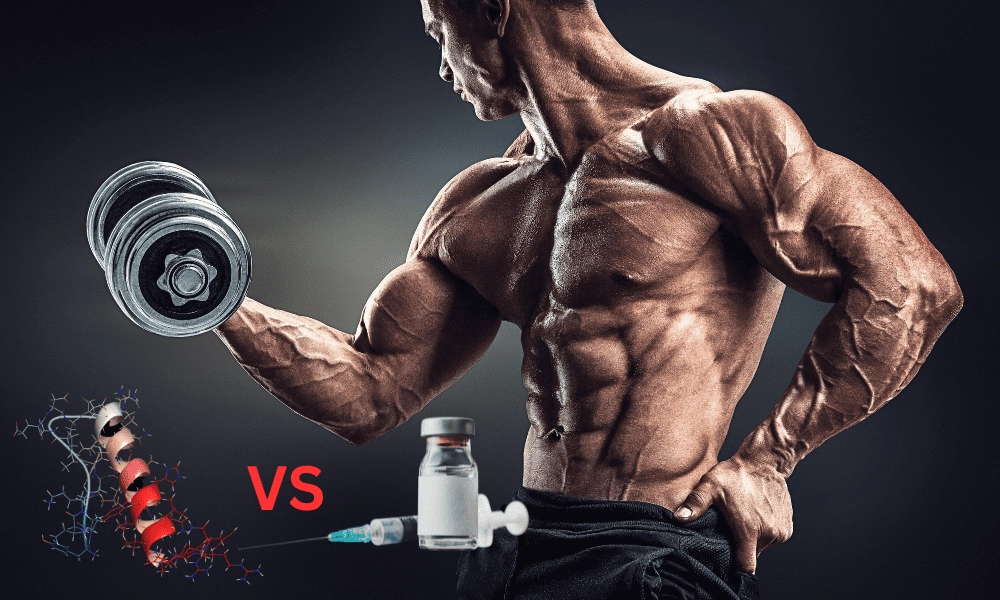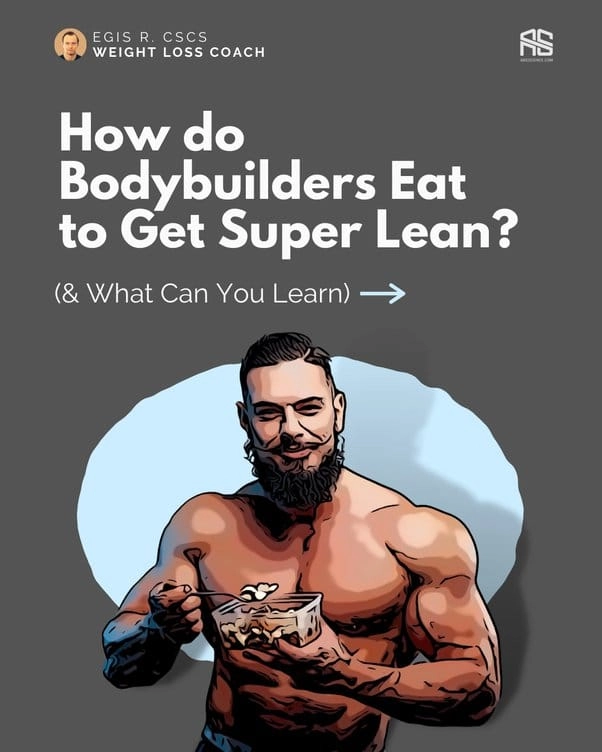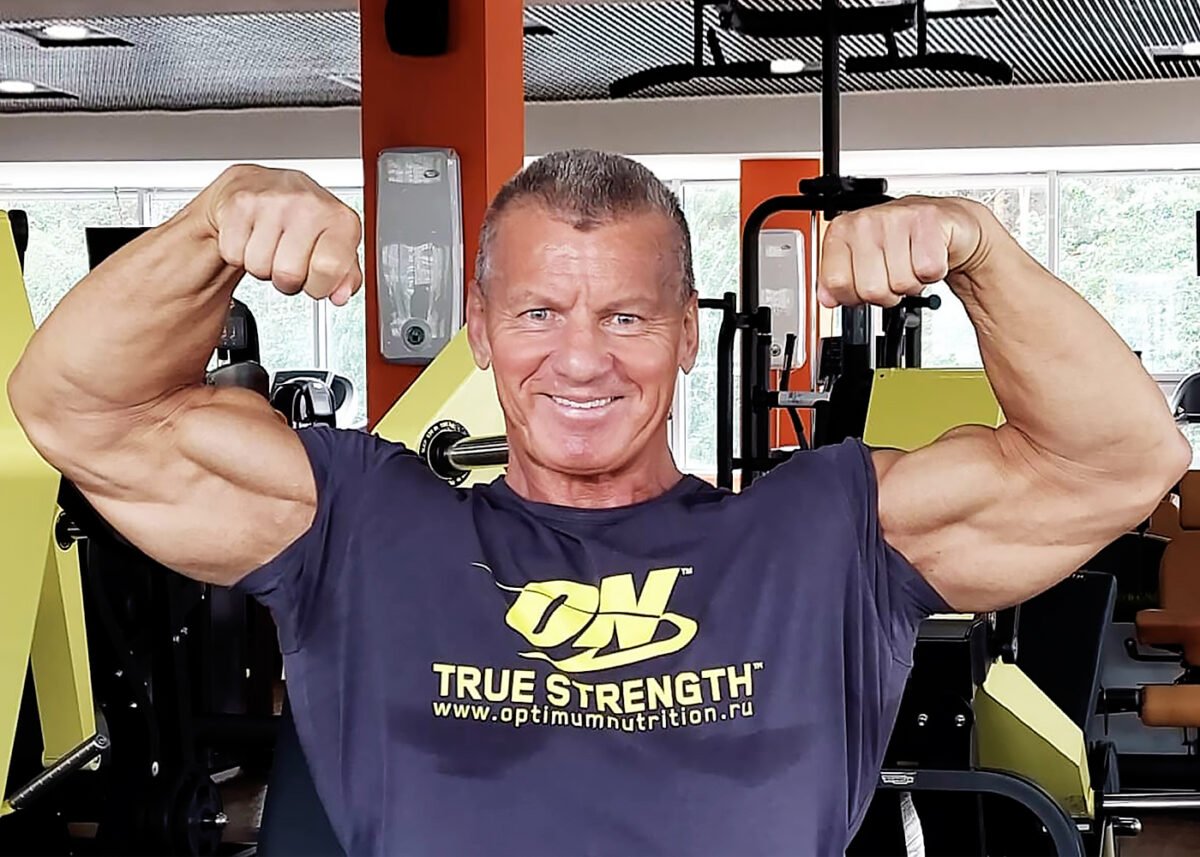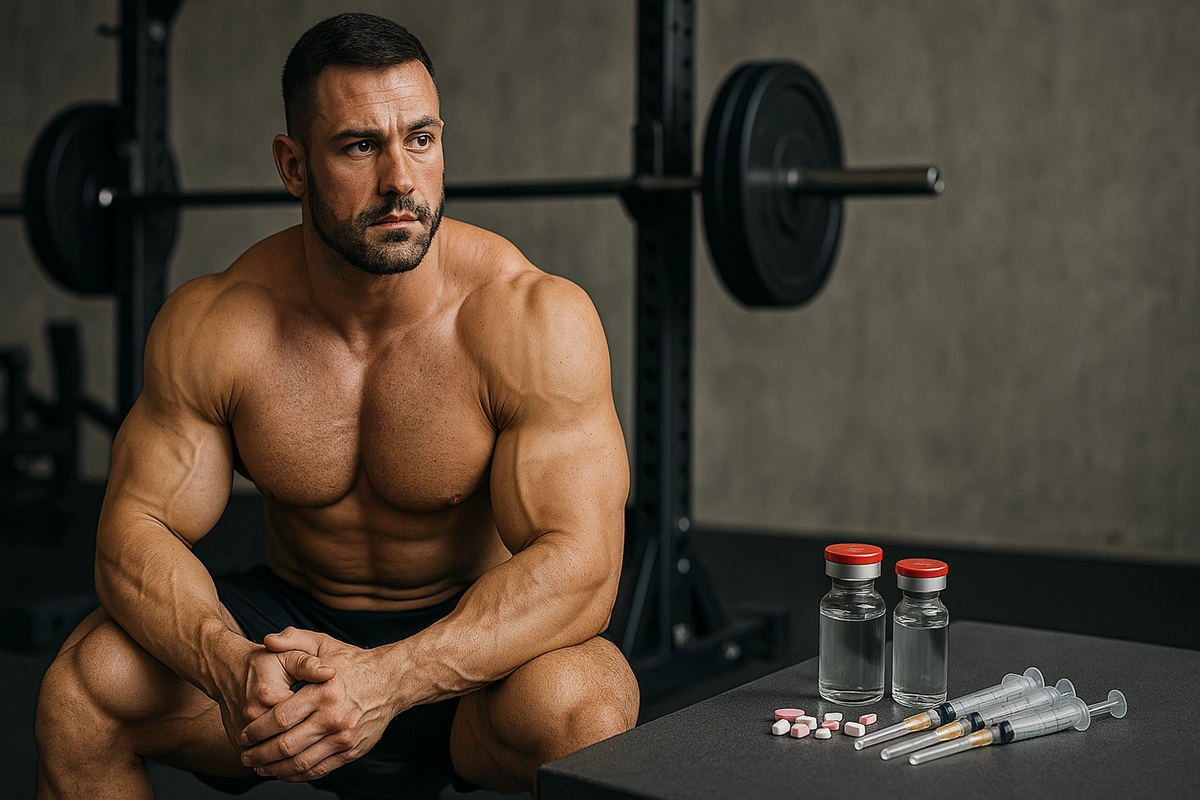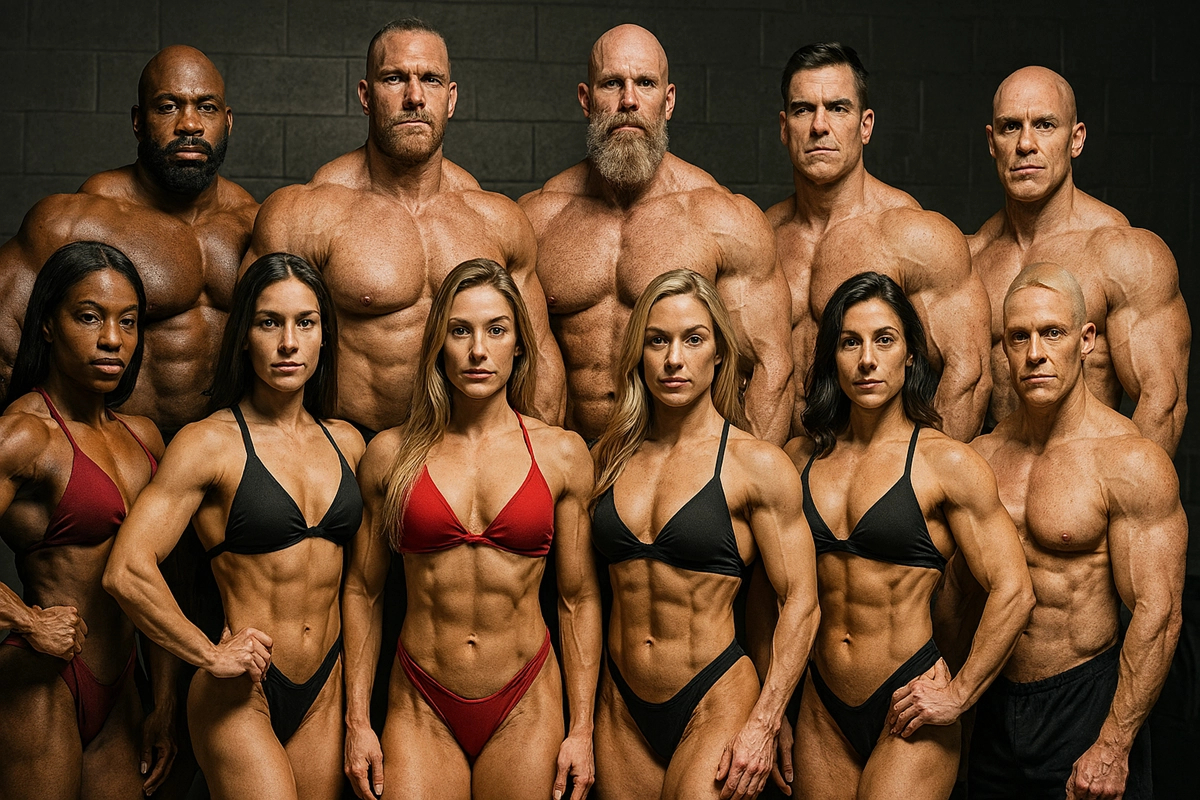Whether stepping onto a competitive stage or perfecting your physique for personal achievement, mastering essential bodybuilding poses will transform how you showcase your hard-earned muscle.
To stand out, you’ll need more than size and definition; precise execution of each stance can make the difference between blending in and commanding attention.
Let’s break down the fundamentals that separate amateur posers from competitors who can display their physiques like Arnold in his prime.
Introduction To Bodybuilding Poses
Bodybuilding is not just about building muscles; it’s also about showcasing them. Posing is an art that bodybuilders perfect over time. It showcases their physique in the best light. Effective posing can set champions apart from the rest.
Each pose highlights different muscle groups. Bodybuilders must master a series of poses for competitions. Let’s dive into the world of bodybuilding poses.
The Importance Of Posing
Posing is crucial in bodybuilding for many reasons:
- Shows muscle definition and symmetry
- Highlights the bodybuilder’s hard work
- Can influence judges’ scores in competitions
Bodybuilders spend countless hours perfecting their poses. They aim to display each muscle group clearly.
Historical Evolution Of Poses
Bodybuilding poses have evolved. Classic poses have been passed down through generations, and new poses have also emerged.
| Year | Posing Evolution |
| Early 1900s | Basic stances |
| 1940s-1970s | Golden Era, classic poses defined |
| 1980s-Present | More dynamic and creative poses |
Today, bodybuilders blend classic and modern poses to impress judges.
1. Quarter Turns
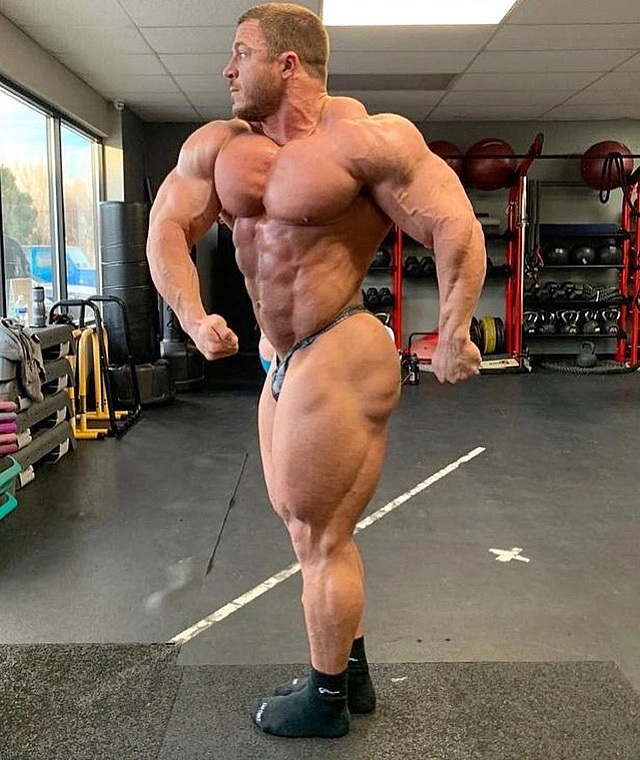
When you step onto a bodybuilding stage, your first challenge is mastering the quarter turns – a series of precise rotations that showcase your physique from every angle
These fundamental movements aren’t traditional poses but essential shifts between poses that allow judges to evaluate your entire physique systematically.
As you execute each quarter turn, you’ll reveal your balanced muscle development while maintaining a powerful appearance.
Your competitor’s v-taper becomes particularly visible during these rotations, making them significant for creating that initial impact.
Think of these turns as your opening statement – they set the tone for your performance.
Remember: These aren’t just mechanical movements.
Each turn should flow smoothly, demonstrating your preparation and confidence while giving judges a thorough view of your physique.
2. Front Double Biceps
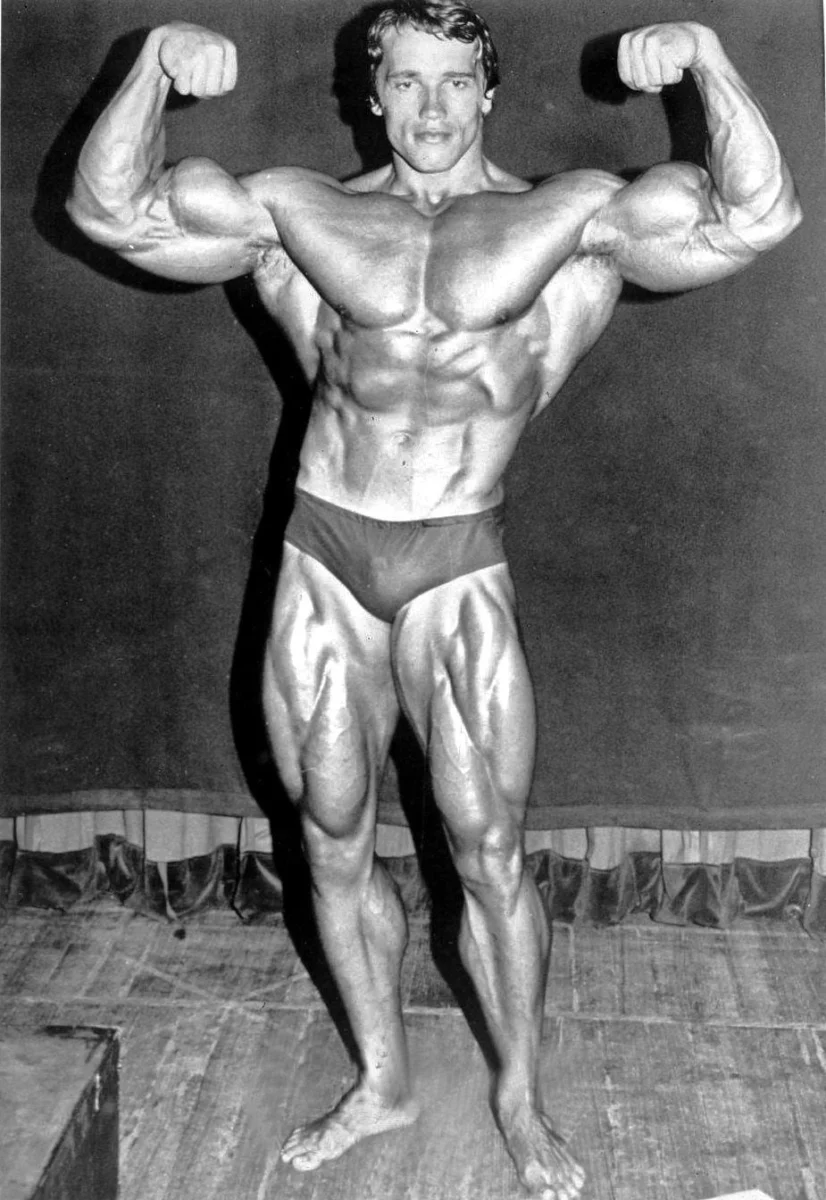
The front double biceps pose is one of bodybuilding’s most iconic displays of muscular development. Your leg placement at shoulder width creates the foundation for showcasing your X-frame, where broad shoulders and sweeping quads form a distinct “X” shape.
To execute this bodybuilding pose effectively, you’ll need to:
- Position your elbows high
- Drive your lats outward and forward
- Keep your abs tight
- Flex both arms simultaneously
This pose reveals your overall upper body development, muscle symmetry, and arm size while highlighting your chest muscles.
While there’s limited room for personal flair, you can experiment with wrist positions to maximize your bicep peak. Remember, judges will assess your entire front musculature from top to bottom, so maintain balance throughout the pose.
3. Front Lat Spread
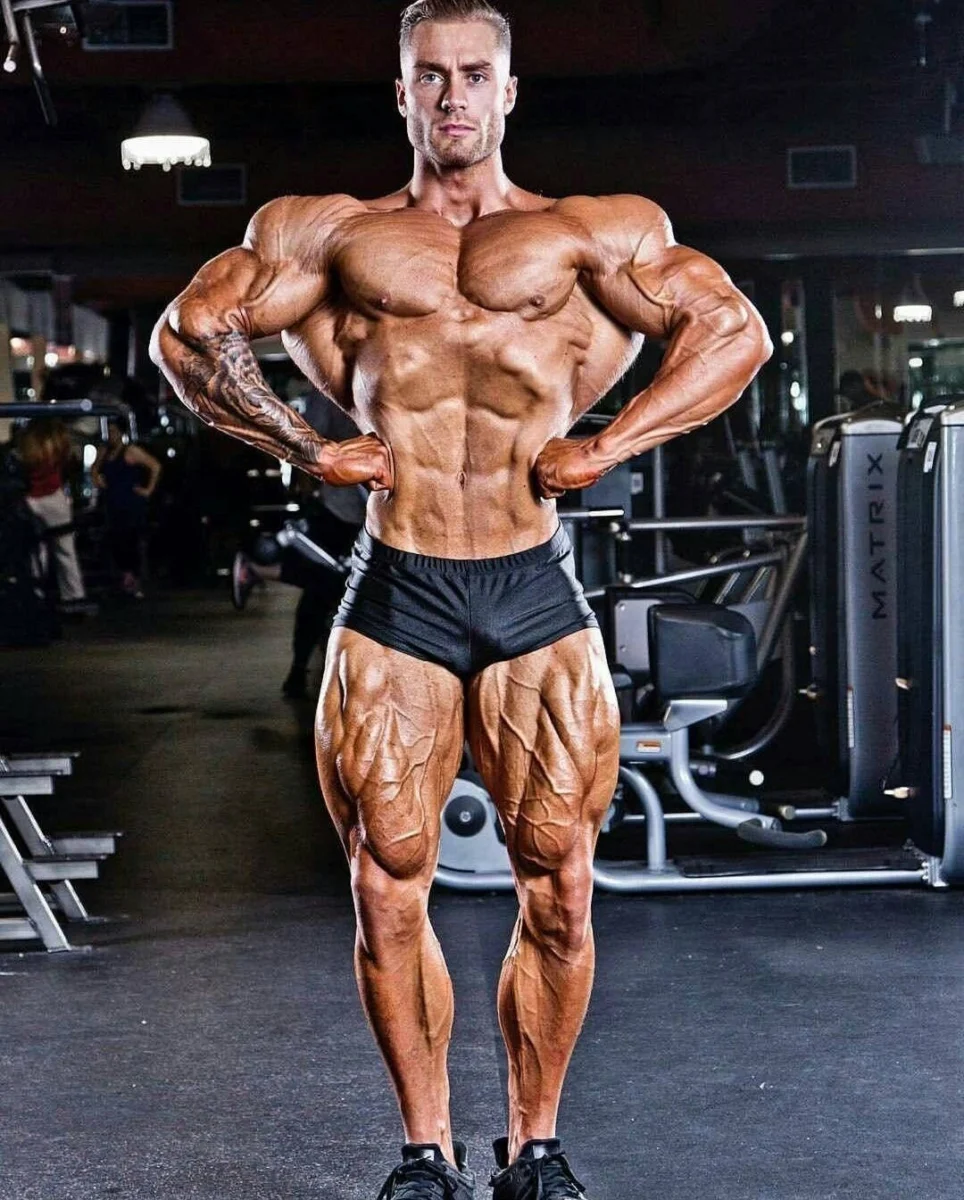
Many competitive bodybuilders consider the front lat spread one of their most powerful poses for creating an impressive illusion of width.
To master this pose, start with your feet shoulder-width apart and turn your toes outward at a slight angle while contracting your thighs.
Next, place your hands on your hips with palms facing down. Focus on flaring your lats outward to maximize your shoulder width and create that coveted V-taper.
Keep your abdominal muscles relaxed. This allows you to lean back slightly while opening your back muscles. This subtle positioning enhances the illusion of a wider shoulder girdle while making your waist appear slimmer.
The key to a successful front lat spread is to balance width expansion and proper form throughout the pose.
4. Side Chest
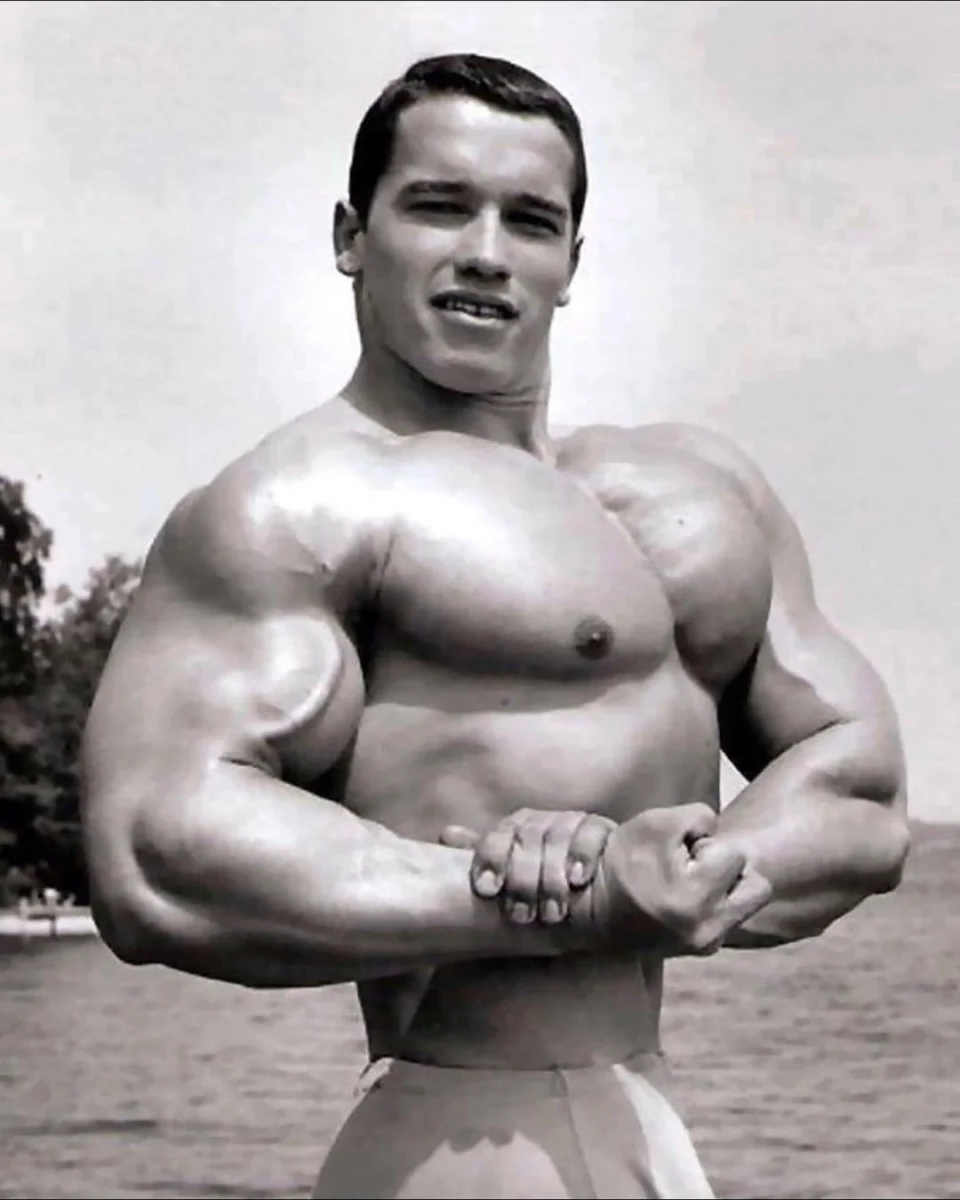
Standing perpendicular to your audience, the side chest pose showcases multiple muscle groups simultaneously while creating a powerful side profile. This muscular pose highlights your hamstring muscularity and quadriceps development from a unique angle, demonstrating total hamstring and quad definition.
To execute the pose:
- Plant your right foot with both knees slightly bent
- Bring your legs together, squeezing your hamstrings and quads
- Spike your audience-facing foot to flex your calves
- Position your body sideways to display chest thickness and arm size
As one of the most all-encompassing poses in competitive bodybuilding, you’ll showcase your muscle size from head to toe. Bodybuilding competitors often start with their right side first, though you’ll need to master both sides for a complete presentation.
5. Back Double Biceps
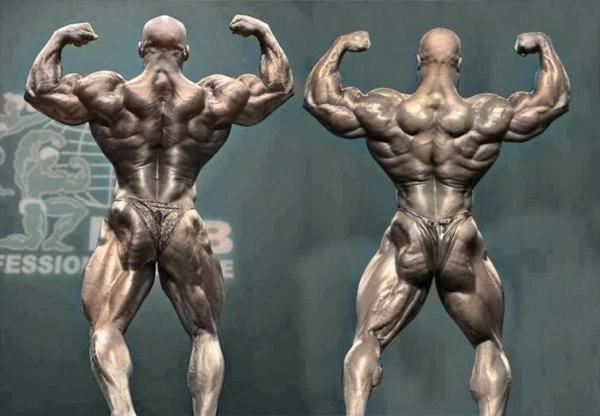
Moving from side views to rear presentations, back double biceps ranks among competitive bodybuilding’s most revealing poses. This pose showcases complete back development, arms, shoulders, and lower body definition.
To execute this pose correctly, spread your lats wide while keeping your shoulder blades open—don’t pinch them together. Position your arms out to the sides, flexing your biceps with elbows slightly above shoulder level to maximize your V-taper. For the best presentation, lean your torso back toward the judges.
Your lower body positioning matters too. Place one foot behind you on its ball to highlight calf development. Remember to contract your hamstrings and glutes for maximum muscle separation.
This classic pose, an actual test of overall muscle development, often separates champions from runners-up on competition day.
6. Rear Lat Spread

The rear lat spread, a test of back development mastery, builds on its front-facing counterpart with some key differences. While you’ll perform the same basic movement, you’ll face away from the judges to showcase your back width and overall shape.
To execute this pose effectively:
- Turn your back on the judges
- Spread your lats wide, just as you’d in the front variation
- Lean back slightly, tilting your shoulders toward the audience
- Focus on displaying your triceps development
- Contract your hamstrings and calves
This backward lean is essential. It creates the illusion of a narrower waist while highlighting the coveted Christmas tree shape in your lower back.
7. Side Triceps

Similar to the side chest pose, this classic bodybuilding stance emphasizes triceps development, creating a powerful display of upper arm muscularity.
To nail this familiar bodybuilding pose, keep your legs close together, with your “off” leg pushing the visible hamstring outward for maximum muscle definition.
Unlike the side chest pose, you won’t be blocking your waist with your arms, so maintaining control on stage is essential – keep those abs flexed throughout.
Pull your arm firmly against your torso to create a balanced pose that emphasizes your well-developed upper body.
This movement will make your triceps “pop,” showcasing the three-headed muscle in its full glory.
Remember to flex nearly every muscle in your body to achieve that complete, polished look judges expect in competition.
8. Abdominals and Thighs
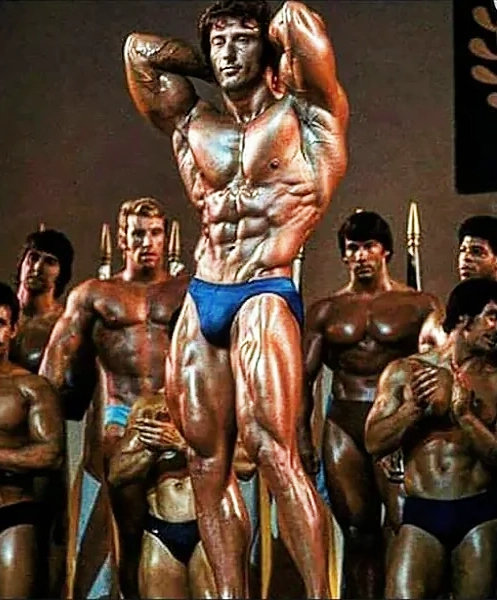
Known as one of bodybuilding’s most revealing poses, the abdominals and thighs stance demands extreme muscular control and definition throughout your entire physique.
You’ll need exceptional core strength and athletic mobility to execute this pose effectively on the bodybuilding stage.
To perform it, take a staggered stance while flexing your legs and calves. Raise your arms and lock your hands behind your head, creating a natural lat spread that enhances your V-taper.
Next, exhale sharply while contracting your abs intensely to showcase your shredded core. In bodybuilding competitions, especially Classic Physique, some competitors begin with a stomach vacuum to demonstrate superior abdominal control.
This pose isn’t just about core exercises – it’s a thorough display of your leg development, midsection definition, and overall conditioning.
9. Most Muscular
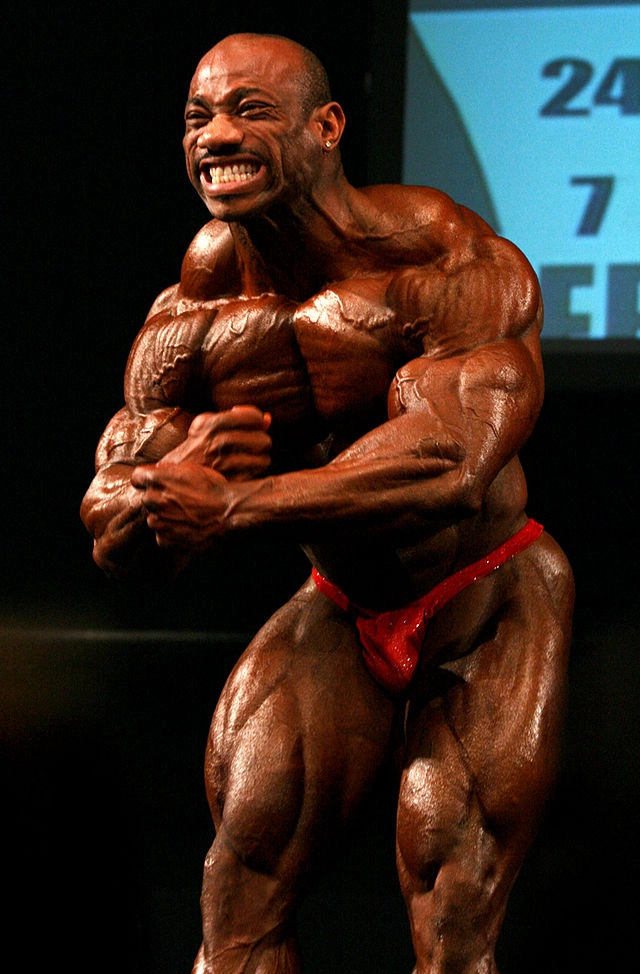
Moving beyond core control, bodybuilding’s most muscular pose truly indicates raw power and total physique development.
This signature display maximizes the appearance of size and creates an impressive visual impact that highlights your overall muscle mass.
There are two primary variations of the standard pose. The first involves leaning forward with fists facing the audience, while the second requires standing upright with clasped hands at waist level.
Both demand an intense mind-muscle connection to achieve peak muscularity.
To execute effectively:
- Choose the variation that best suits your physique
- Contract every major muscle group simultaneously
- Maintain low body fat for superior definition
- Practice your posing routine regularly to perfect the stance and timing
10. Vacuum Pose
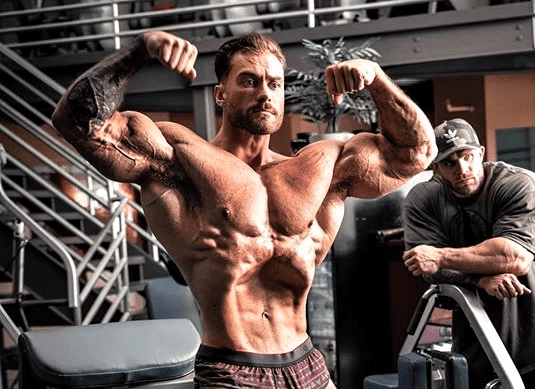
The stomach vacuum represents bodybuilding’s ultimate test of core control and aesthetics. This iconic pose, mandatory in the Classic Physique division, requires you to modify the traditional abdominal and thigh pose by creating a hollow appearance in your midsection.
To execute this move, you must empty all air from your diaphragm while pulling your abdominal wall inward. This challenging technique highlights your shoulder-to-waist ratio and showcases impressive bodily control that sets Classic competitors apart from other divisions.
During the vacuum, you’ll notice enhanced muscle visibility in your lats, serratus, and hip flexors. The pose pays homage to bodybuilding’s Golden Era, when legends would incorporate stomach vacuums even in relaxed stances, demonstrating the perfect blend of size and control that defined that historic period.
11. Moon Pose
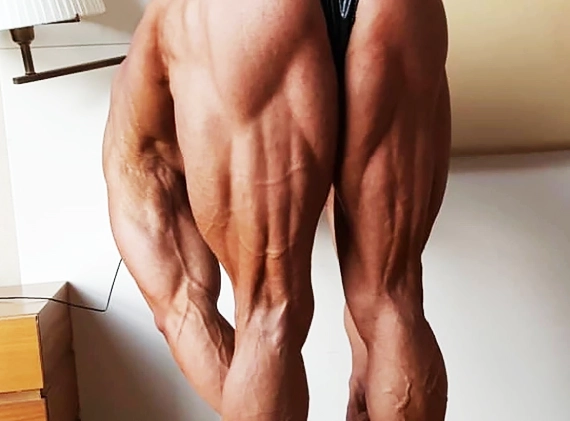
Despite its popularity among legendary bodybuilders like Tom Platz, the moon pose is not used in modern competitions because major federations have banned it for being too provocative.
While controversial, the moon pose offers a unique way to showcase your hamstring muscularity and flexibility. To perform it, you’ll need to turn your back to the audience and bend forward at the waist, similar to a standing forward fold in yoga.
Tom Platz, renowned for having some of the most impressive legs in bodybuilding history, frequently used this pose to highlight his exceptional muscle growth, particularly in his hamstrings and calves.
While you can’t include it in your competitive routine, practicing this pose during training can help assess your posterior chain development and overall flexibility.
Common Posing Mistakes To Avoid
Perfecting bodybuilding poses is as crucial as the muscles themselves. A winning routine blends strength with grace. A single misstep can distract judges from a competitor’s hard-earned physique. Let’s explore common errors that can dent a flawless presentation.
Over-posing
Striking a balance in posing is key. Excessive flexing or tension can ruin a natural look. Aim for poise, not stiffness. Judges favor a pose that seems effortless. Overdoing it can lead to points lost.
Ignoring Weaknesses
Every athlete has strengths and weaknesses. Avoiding flaws is not the answer. Instead, work to improve them. Present a balanced package. Judges notice all aspects of a physique.
Lack Of Fluidity
Transitions between poses should be smooth. Jerky movements can jar the audience and break the spell of a routine. Practice flowing seamlessly from one pose to the next. This grace can set a competitor apart.
How Bodybuilding Is Judged?
Bodybuilding is judged by evaluating symmetry, muscularity, conditioning, and stage presence through mandatory poses. Judges assess athletes during prejudging and finals, considering muscle proportion, v-taper, and posing skill.
Criteria vary across divisions, with specific expectations for categories like Men’s Open, Physique, and Figure.
Judging Criteria For Bodybuilding Poses
Bodybuilding is not just about lifting weights. It’s a form of art that requires mastering specific poses. Each pose showcases the athlete’s physique from different angles. Judges look for a combination of muscle size, symmetry, and overall presentation. Knowing what the judges are looking for can make or break a competitor’s score.
Criteria Overview
Bodybuilding poses are more than just flexing muscles. Judges use a set of criteria to assess each competitor. The criteria include:
- Muscular Development: The size and shape of the muscles.
- Symmetry: The balance and proportion of the physique.
- Conditioning: Muscle definition and leanness.
- Stage Presence: Confidence and poise during posing.
Scoring System Insights
The scoring system in bodybuilding is complex. Judges give points for each pose. Let’s look at how scoring works:
| Pose | Criteria | Points |
|---|---|---|
| Front Double Biceps | Arm and chest size, symmetry | 1-10 |
| Side Chest | Chest depth, side definition | 1-10 |
| Rear Lat Spread | Back width, muscle detail | 1-10 |
| Abdominal and Thigh | Abdominal definition, thigh size | 1-10 |
Each judge scores poses out of ten points. The highest and lowest scores are often removed. The remaining scores are totaled to find the athlete’s ranking.
To Wrap It All Up
You’ve mastered the art of flexing every muscle fiber, yet ironically, the most challenging pose makes it all look effortless.
Whether you’re channeling Arnold’s iconic vacuum pose or perfecting your quarter turns, remember that a winning routine isn’t just about raw strength; it’s about presence.
Now that you have pro-level posing knowledge, the real performance begins when you forget about posing entirely.
FAQs
What Are the Classic Bodybuilding Poses and Why Are They Important?
Classic bodybuilding poses include the front double biceps, side chest, back double biceps, ab and thigh, and most muscular. These poses are important because they highlight symmetry, muscularity, and presentation, which are essential judging criteria in bodybuilding competitions.
How Do Bodybuilding Poses Highlight Different Muscle Groups?
Bodybuilding poses highlight different muscle groups by targeting specific angles. For example, the front lat spread emphasizes width, while the side triceps shows arm and core detail. Judges assess how well each pose defines muscle separation, proportion, and balance.
What Are the Most Common Mistakes in Bodybuilding Posing?
Common bodybuilding posing mistakes include poor posture, lack of muscle control, rushed transitions, and inconsistent facial expressions. These errors reduce scoring potential by distracting from symmetry and definition. Practicing with a mirror or coach helps correct form and improve confidence.
How Do Bodybuilding Judges Score Posing Rounds in Competitions?
Bodybuilding judges score posing rounds based on symmetry, muscular development, conditioning, and stage presence. Each pose must showcase balance and control. Judges also consider fluidity, confidence, and how well competitors meet mandatory pose standards.
What’s the Best Way to Learn Bodybuilding Posing: Self-Taught vs. Coach?
The best way to learn bodybuilding posing is by working with a coach. Coaches correct mistakes, refine technique, and accelerate progress through structured feedback. While self-teaching builds awareness, coaching ensures better alignment with competition standards.


